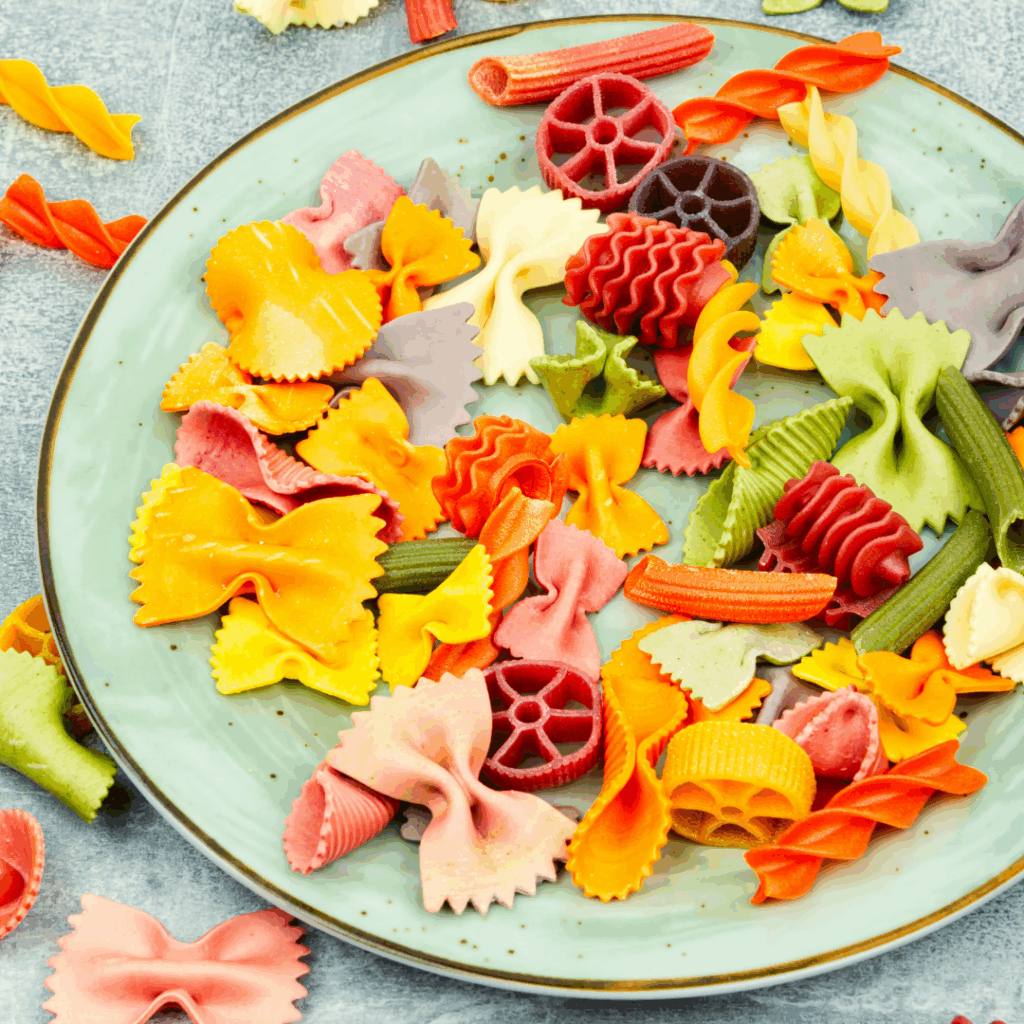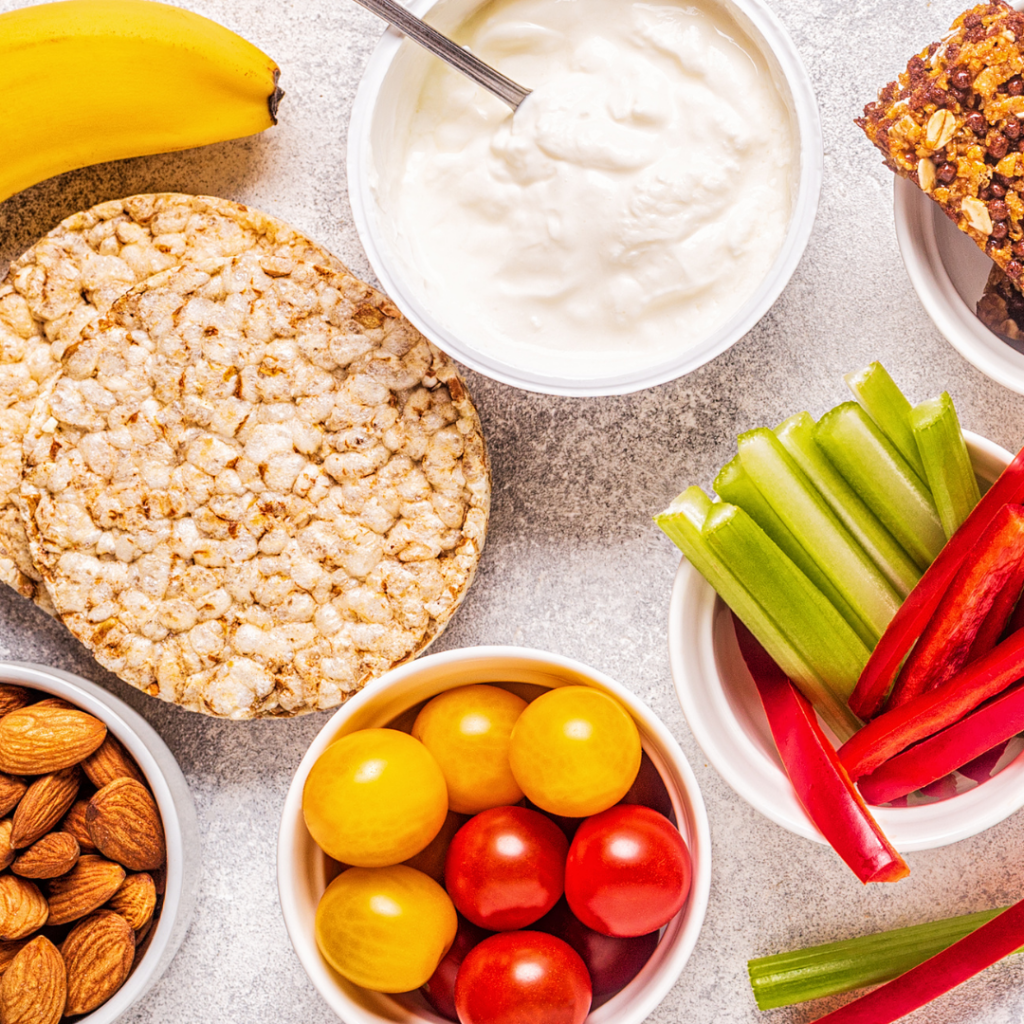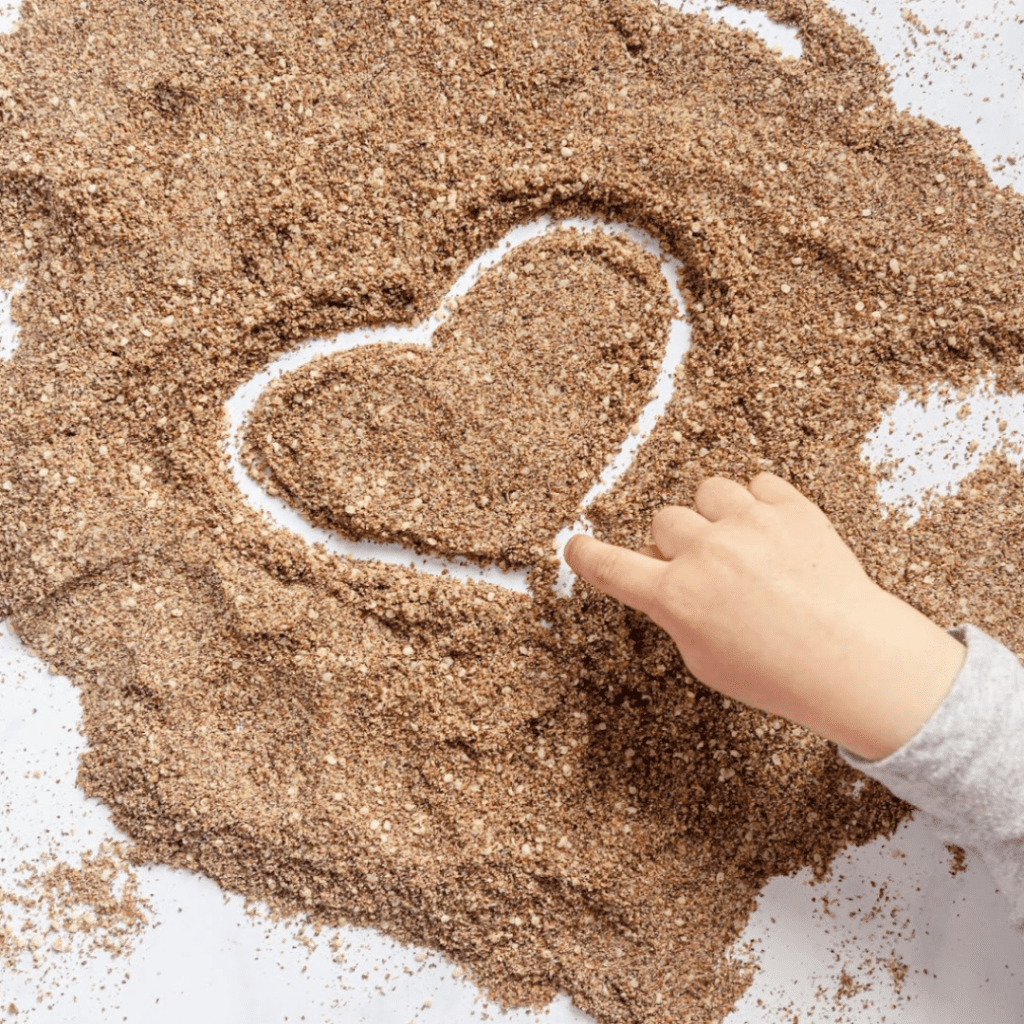This post was sponsored by nomz and contains affiliate links, please view our disclosure policy for more details.
Babies and toddlers NEED healthy fats to support their rapid growth in the first few years of life.
While other major nutrients are also important, fat in particular is required for proper brain growth and development, so it’s definitely something we want to focus on when starting solids and all the way through toddlerhood.
Since there is more than just one type of fat to consider here, it’s understandable that you may have some questions like which fats are healthy versus unhealthy, what foods contain healthy fats, and how do you serve them to your child.
In this blog, we’re going to give you all of the details about why babies and toddlers need fat, which food sources provide lots of healthy fat, we’ll walk you through how to add healthy fats to your little one’s meals, and more. Plus, we’re sharing the best and easiest pancake recipe (packed with healthy fats of course) for you to try!
Let’s get started.
Table of Contents
Do babies & toddlers need high-fat food?

The short answer is yes, and a lot of it!
Babies and toddlers go through a significant amount of development during the first few years of life, and feeding them plenty of fat ensures that they will continue to grow and reach important milestones at a proper pace (1).
Fat is essential for maintaining energy and supporting proper growth, it’s also the macronutrient that carries the most amount of calories per gram (1). Fat offers 9 calories per gram, whereas both of the other macronutrients, carbohydrates and protein, only offer 4 calories per gram. And since babies have small stomachs and can’t handle large amounts of food, fat offers the biggest bang for your buck when it comes to calories!
Since two-thirds of your baby’s brain is made up of fat, it’s crucial they get enough fat to support the development of their brain, as well as their nervous system. Fat also plays a role in helping with the absorption of other nutrients like vitamins A, D, E, and K. These are called fat-soluble vitamins because they’re much better absorbed into the body when eaten with high-fat foods (1).
For all of these reasons, there’s no limit on fat for children under 2 years of age, therefore you shouldn’t restrict how much fat your little one gets until they reach that age.
One of our favorite, easiest ways to include high-fat foods into your little one’s diet is with the help of nomz products. Take their nomz organic bites for instance, which offer a whopping 14 grams of fat (the healthy kind of fat) in just two delicious bites. They use real, simple ingredients (like nut butter, dates, nuts, and cocoa powder – that’s it!) for something so delicious that your little one can’t resist.
We also love the nomz organic nut butters – full of pure, healthy fat that you can add to almost anything (like yogurt, smoothies, pancakes, muffins, and more). Boost your little one’s fat intake – without any fuss! They make the perfect anytime snack, plus they’re organic, gluten-free, vegan, and contain no refined sugar – which we’re obsessed with.
You can get 15% off any nomz products using code MYLITTLEEATER15 here!

What are healthy fats for babies & toddlers?

Now that you know babies and toddlers need healthy fats in their diet, let’s discuss what types of fat they need and which should be limited or avoided. There are three main types of fat that we want to include in your little one’s diet: saturated fat and unsaturated fat (which includes both monounsaturated and polyunsaturated fats).
Unsaturated fats
These are what we call healthy fats! They’re beneficial for our body in a number of ways including keeping our heart healthy, improving blood cholesterol levels, reducing inflammation, and more (2). They’re mostly found in nuts and seeds (2). There are two categories of unsaturated fats:
- Monounsaturated fats are found in high concentrations in avocados, oils (olive and peanut oil), nuts (almond, hazelnuts, and pecans), and seeds (pumpkin) (2).
- Polyunsaturated fats which are found in high concentrations in oils (sunflower and soybean oils), walnuts, fish, and flaxseeds (2). Omega-3 fats are an important type of polyunsaturated fats that our body cannot make, so they must come from food. Omega-3 fats consist of three different fatty acids, one of which is called docosahexaenoic acid (DHA). This is one of the main building blocks of the brain. It is very important for moms during pregnancy and for babies in the first three years of life for healthy brain and eye development (2). Top food sources of DHA are mainly fatty fish, which include salmon, trout, and sardines, among others (3).

Saturated fats
These are mainly found in animal foods like red meat, and dairy products like butter, yogurt, and cheese. They’re also found in some plant foods like coconut, palm oil, and palm kernel oil (2,4). When saturated fats (especially from sources that are grass-fed) are consumed as part of a balanced diet made up of mostly whole foods, there is currently no evidence to support that saturated fat should be limited to a certain amount (4).
Plus, food sources like meat and dairy products that contain saturated fat also provide an abundance of other essential nutrients like proteins, potassium, calcium, phosphorus, vitamins A, D, and B12, riboflavin, and niacin (4). These nutrients interact with each other, and one can play a role in the effective absorption of another (4)
What are unhealthy fats for babies & toddlers?
Trans fats are what we call unhealthy fats. They have harmful effects on the body such as creating inflammation, increasing the risk of heart-related conditions, raising LDL (bad) cholesterol, and contributing to insulin resistance (2, 5, 6). Trans fat can be found in baked goods, processed snack foods, fried foods, and margarine (2).

When it comes to babies and toddlers, it’s best you don’t introduce foods you don’t want them to be eating in this first year. This is the time when it should be easy to keep their diet tailored the way you want it, and their taste buds formed around the foods we hope to raise them on for their lifetime.
Highly processed foods typically have high amounts of unhealthy (trans) fats you’ll want to limit or avoid, including margarine, chips, bacon, and processed cheese. Any fatty deep-fried foods (especially those using unhealthy oils like vegetable oils or canola oils) should technically be limited. Typically these foods aren’t nutrient-dense, and while there will always be some exceptions and special occasions when these foods are offered, fast-food fried items should be avoided most of the time.
Store-bought desserts and sweets are full of trans fats and they really should be avoided altogether until around 2 years of age – with the exception of maybe that first-year cake smash, but of course, you’re the parent, so use your own judgment.

If you’re looking for a healthy dessert made with good fats for your baby or toddler, the newest product from nomz – nomzicles – has got you covered! These are organic chocolate popsicles that taste just like a classic fudgesicle, only way better. Made up of only four simple, nutrient-dense ingredients, nomzicles are an excellent source of monounsaturated fats (healthy fats) (7g per bar), protein (4 g), essential vitamins and minerals, antioxidants, and fiber.
Since they’re made with only good-for-you, organic ingredients, that means they’re perfectly safe and healthy for your baby or toddler, and you don’t have to feel bad about offering this frozen treat to your little one.
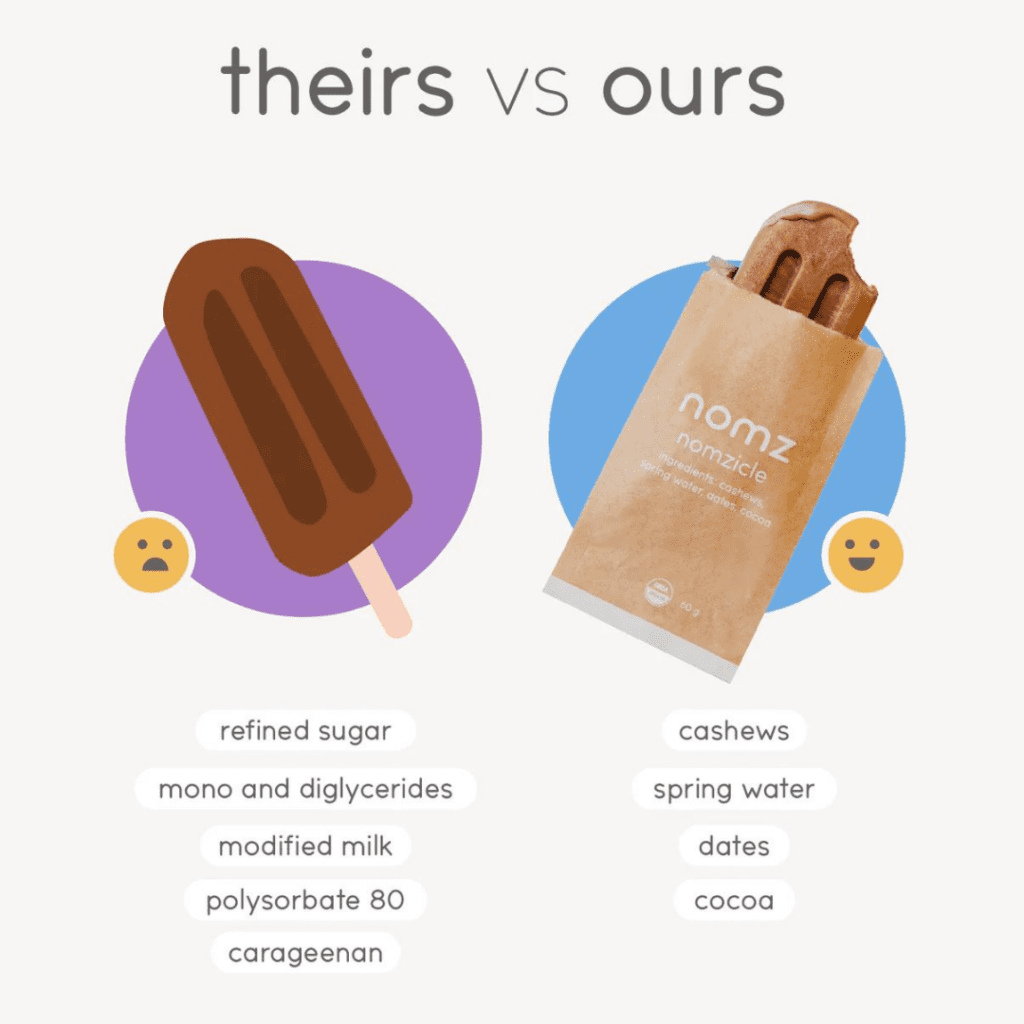
What are the best sources of fat for babies & toddlers?
Now that we’ve covered all of the bases about the different types of fat and why babies and toddlers need healthy fats, let’s explore the best food sources of healthy fat for your little one!
1. Nuts and nut butters

Nuts are a great source of healthy (unsaturated) fats and many other beneficial nutrients for your growing baby and toddler. Commonly eaten nuts, ranked from highest to lowest in healthy fat, include (7):
- Macadamia
- Pecans
- Pine nuts
- Walnuts
- Brazil nuts
- Hazelnuts
- Pistachios
- Almonds
- Cashews
- Peanuts (although technically a legume, we include peanuts in this category because they are very similar in terms of their nutrition profile and characteristics)
Large nuts can be a choking hazard for children under the age of 4. To reduce the choking risk, you can finely grind nuts for the youngest of eaters (in a food processor if you want to make them into a fine powder) and add them to foods that way. You can use ground-up nuts to coat slippery foods like bananas, avocados, and mango to add some grip, flavor, and texture to the food! It will also make it easier for your baby to pick it up and provide a new experience for them. You can also sprinkle ground nuts on top of yogurt, quinoa, roasted veggies, or any other food.
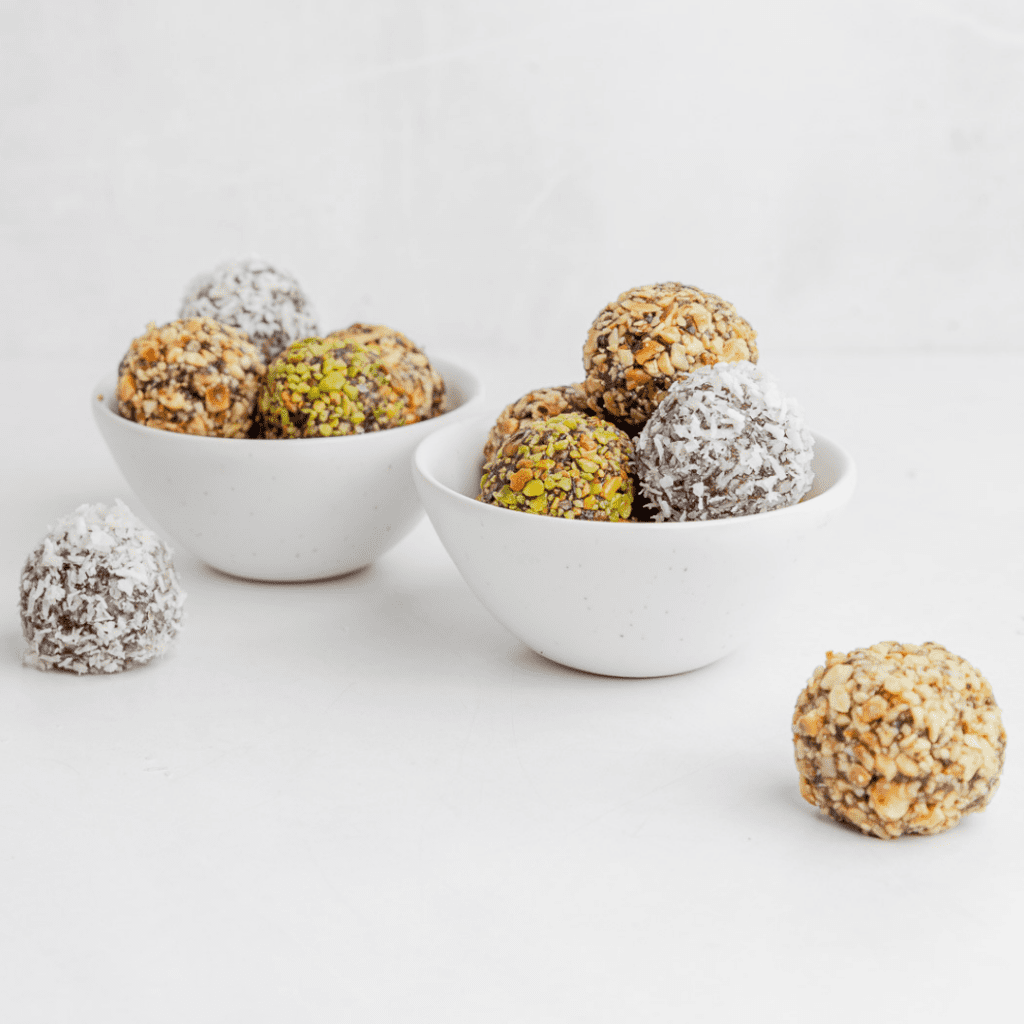
Similarly to nuts, nut butters are a great source of healthy (unsaturated) fats for your growing baby or toddler. We recommend choosing an all-natural version (just the nut, oil, and maybe salt) if possible, and avoid overly processed ones with added sugar, canola oil, or other ingredients.
Look no further, nomz organic nut butter contains only one single ingredient – just the nut in butter form, making it the perfect option for your baby or toddler. It can’t get better than that! You can choose between four different varieties of nomz organic nut butter, including:
- Almond butter
- Pistachio butter
- Hazelnut butter
- Macadamia butter
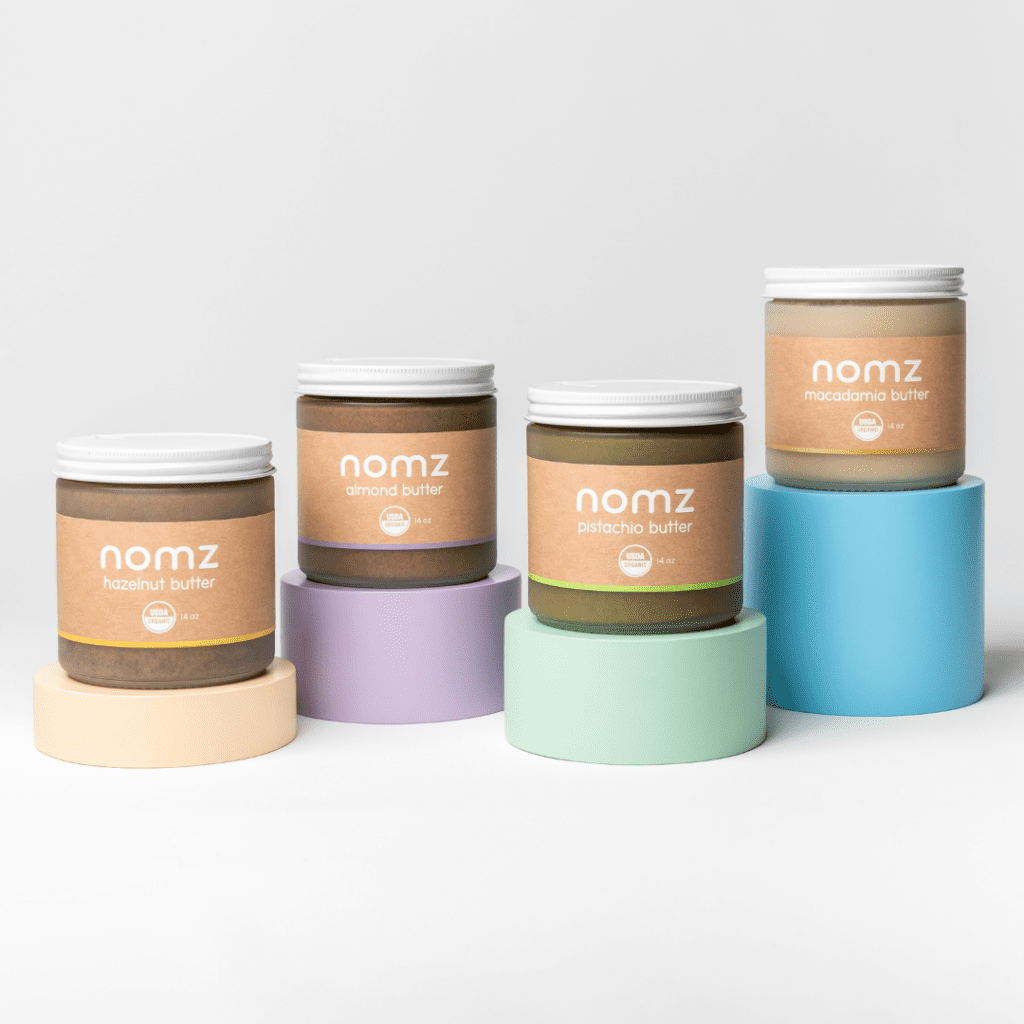
Big globs of nut butter can be a choking risk, so to reduce the choking risk of nut butters, thinly spread it onto toast or a baby-safe cracker, or mix it right into your favorite puree! You can also use hot water or breastmilk to thin out nut butter as needed to use as a mix into things like yogurt or oatmeal.
Because tree nuts and peanuts are considered to be highly allergenic foods, you can use the nomz organic nut butter variety pack as an easy way to introduce tree nuts, one by one, and then again at least 1-2 times a week to keep up with the allergen exposure and reduce allergy risk. You can learn more about proper allergen introduction protocols, here.
2. Seeds
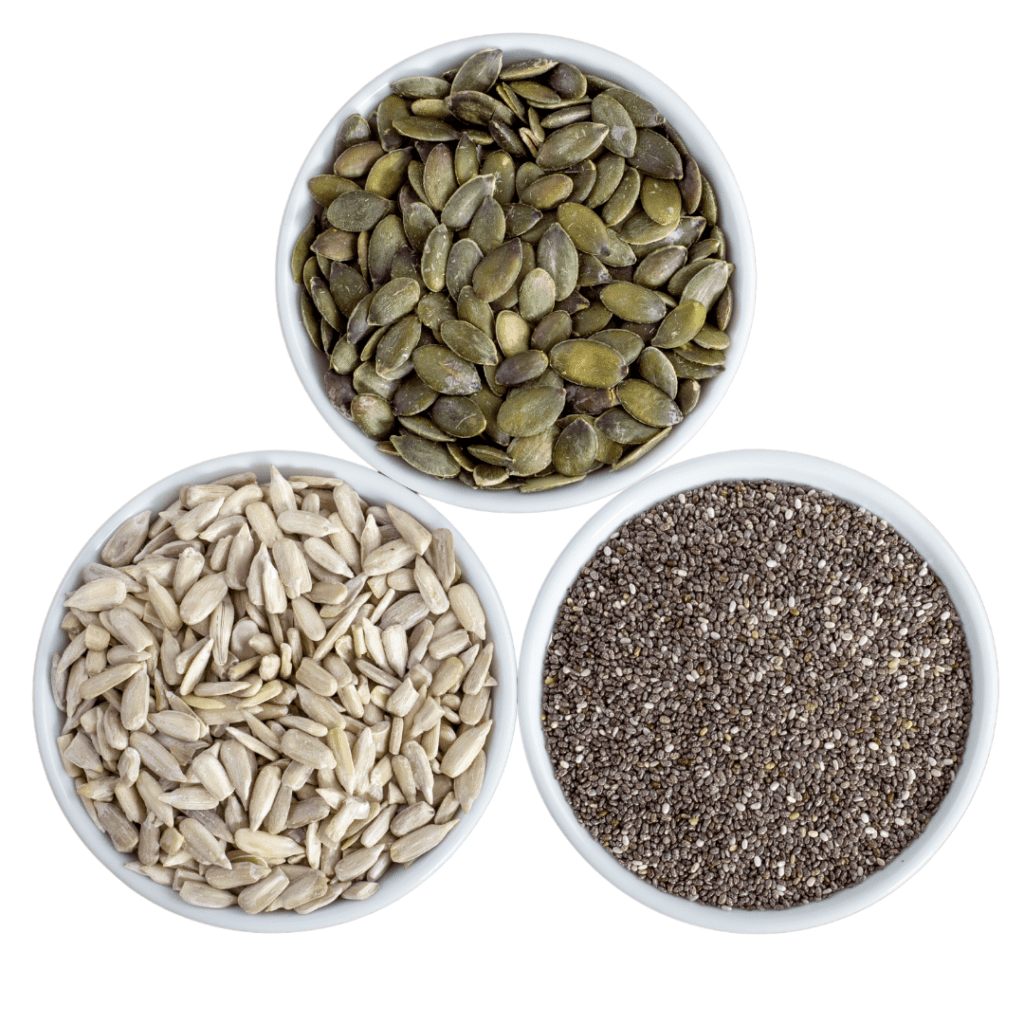
Seeds are a great source of healthy fats and protein that’ll give your little one an extra boost of nutrition they need to keep them full for longer! Commonly eaten seeds, ranked from highest to lowest in healthy fat, include:
- Sunflower
- Hemp seeds
- Pumpkin
- Flax
- Chia
Large seeds like pumpkin and sunflower seeds can be a choking hazard for babies and toddlers. To remove the choking risk, you can finely grind seeds (in a food processor if you want to make them into a fine powder) or chop them very finely and keep a watchful eye while your baby eats.
You can use large ground-up seeds (or small seeds like flax, hemp, or chia seeds) to coat slippery foods and add some grip, flavor, and texture to the food! You can also sprinkle seeds on top of oatmeal, fruit, veggies, pasta, or any other food.
3. Avocado, artichoke, and coconut

Avocado, coconut, and artichokes are all considered fatty fruits beneficial for nourishing your baby and toddler’s growth and brain development. All of these fatty fruits also provide a good source of fiber, useful for your little one’s digestive and gut health.
Avocado is, of course, one of the most common first foods for babies due to its high fat, and therefore high-calorie content, so it’s going to provide a lot of nutritional bang for your buck per bite. Avocado is also soft and easy for your baby to mash in their mouth and falls on Phase 1 of the Texture Timeline™. Avocados are very easy to prepare and can be served in a wedge shape, mashed and spread on a piece of toast, or served on a preloaded spoon.
Artichoke hearts can be served to baby either steamed or roasted (with roasted being the more advanced texture) until very soft. You can serve them whole, sliced, or mashed.
Coconuts can be eaten as unsweetened, dried, finely shredded coconut that can be mixed into other soft foods for baby. You can also roll slippery foods like avocado and banana in shredded coconut for some added grip and nutrition!
4. Oils

Oil is such an easy way to add healthy fats to your baby or toddler’s meals because it can basically go with any food like pasta, roasted veggies, fish, meat, eggs, sauces, and dips! Add oil to foods like roasted veggies, fish, meat, and eggs before cooking, or use it to coat foods like pasta or veggies after they’re cooked. Oils that contain healthy fats include:
- Olive oil
- Avocado oil
- Coconut oil
- Flaxseed oil
- Hemp seed oil
Let’s put this myth to rest once and for all…you can absolutely use olive oil for pan frying! In fact, olive oil is actually one of the best and healthiest oil options to use.
5. Butter, ghee, and cream

Butter, grass-fed in particular, is a great source of healthy fat to add to your little one’s meals and you can add it to so many different foods (8). It can be added during the cooking process for added flavor and moisture, melted and used after cooking as a dip for veggies or meat, or just spread on a piece of toast.
Ghee is a form of clarified butter, which has almost zero lactose and casein (milk protein), making it a great option for kids on lactose-free or dairy-free diets (9).
Cream, which is sometimes called “heavy cream” or “whipping cream” has a fat content typically between 33% to 35% milk fat. Due to its high-fat content and silky, smooth texture, full-fat cream is perfect for making creamy soups and pasta sauces (10).
Remember that butter and cream are made with dairy, which is considered to be a highly allergenic food, so you’ll want to follow the proper protocol for introducing it, which can be found here.
6. Egg yolks

Highly versatile in how they can be served to little ones, eggs can be served as a purée, an omelet, egg cups, fried, mashed and mixed with a base to make egg salad, scrambled, minced, boiled and thinly sliced or boiled and cut into wedges.
Mashed boiled or scrambled eggs mixed with Greek yogurt makes a nutritious topping for foods like toast, rice rusks, or crackers for your baby and toddler. This combination can be a meal in and of itself, full of fat, calories, iron, and protein that will keep your baby or toddler full for longer.
See more info on how to serve eggs, here.
To increase variety and exposure to different flavors in your little one’s diet, try adding different spices each time you offer eggs. Dill is one of my favorite spices to pair with eggs! If you want to change it up even more, you can also try mashed egg mixed with avocado, hummus, mayo, or tomato sauce instead of Greek yogurt.
Top tip: Make sure that the egg is cooked really well so that there’s no runny yolk before serving to your baby, to reduce the risk of foodborne illnesses.
7. Oily fish

Oily fish offers so many great benefits for your baby and toddler. It’s high in protein, iron, B12, vitamin D, and calcium, and is often high in omega 3’s which are very important for proper brain growth and eye development. I recommend serving fish to your little one a couple times per week, especially fatty fish. Fatty fish options include:
- Salmon
- Trout
- Herring
- Sardines
- Mackerel
Salmon, in particular, is a great food to add to your baby or toddler’s diet because it’s very low in mercury and of course – is high in DHA (a type of omega-3 we really want to focus on for brain-boosting powers!). Since it’s soft, flaky, and tender, you can serve it to your baby as soon as they start solids!
You can offer fresh or canned salmon in strips or in large pieces broken off of a full piece of cooked salmon. If your little one has a hard time picking it up, you can mix it with a bit of cooked potato, Greek yogurt, hummus, or any other purée and serve it on a spoon. You can also form it into patties and cook them in a pan. Salmon patties or balls are a wonderful way to make salmon easier to hold and make a great meal for the whole family.
Canned sardines also make the easiest meals! When buying canned sardines, make sure to look for one that is in a BPA-free can and is free of added salt. To serve, just pop open the can and serve as a whole filet. This will be easy for baby to eat using their palmar grasp. There is no need to remove the calcium-rich bone inside the sardine – it’s very soft and breaks down with the lightest touch. If the smell bothers you, you can rinse the sardines under water or soak them in vinegar! See how to serve sardines, here.
Find our favorite fish recipes like our salmon sliders, sardine mash, and shrimp cakes inside our 60 Day Baby Led Feeding Meal Plan!
8. Dairy
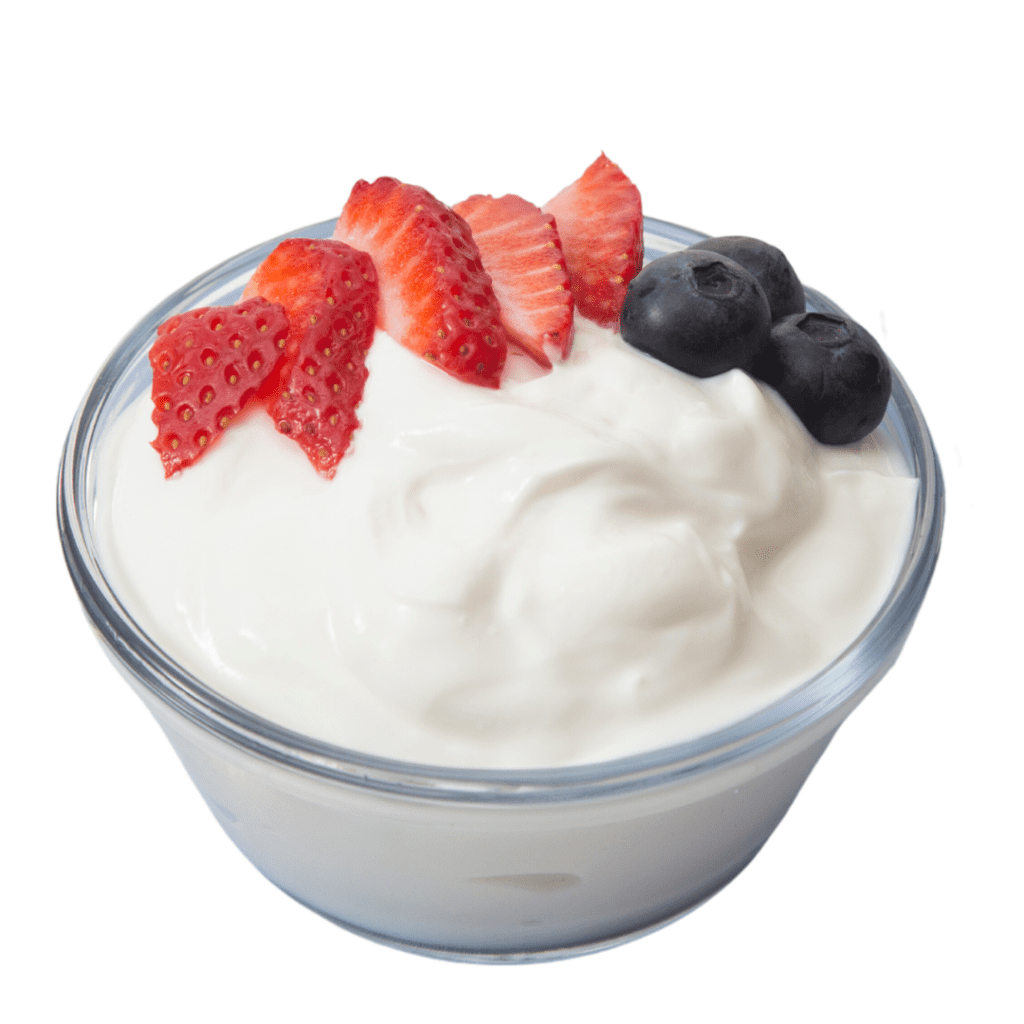
Dairy is one of the easiest ways to add fat to your baby’s diet! When buying dairy products for your little one, always opt for full-fat dairy products. This is true for cheese, milk (look for 3.5% milk fat), and yogurt (choose at least 5-6% milk fat), as this will provide the most healthy fat, essential nutrients and calories that your little one needs for maximum growth potential.
Full-fat Greek yogurt is a great food to add to your baby and toddler’s diet because you can flavor it any way you want. Whether that’s sweetened with mashed berries and used as a toast topping, or as a spiced dip with curry and garlic, it’s so versatile and really bumps up the nutrition by adding healthy fat to the meal.
One of the best cheeses for baby is Labneh, as it’s rich in protein and fat, all while having low sodium content. Another benefit of Labneh is the fact that it’s a soft cheese spread, which makes it super easy to incorporate into your baby’s diet as soon as they start solids.
9. Fatty meat
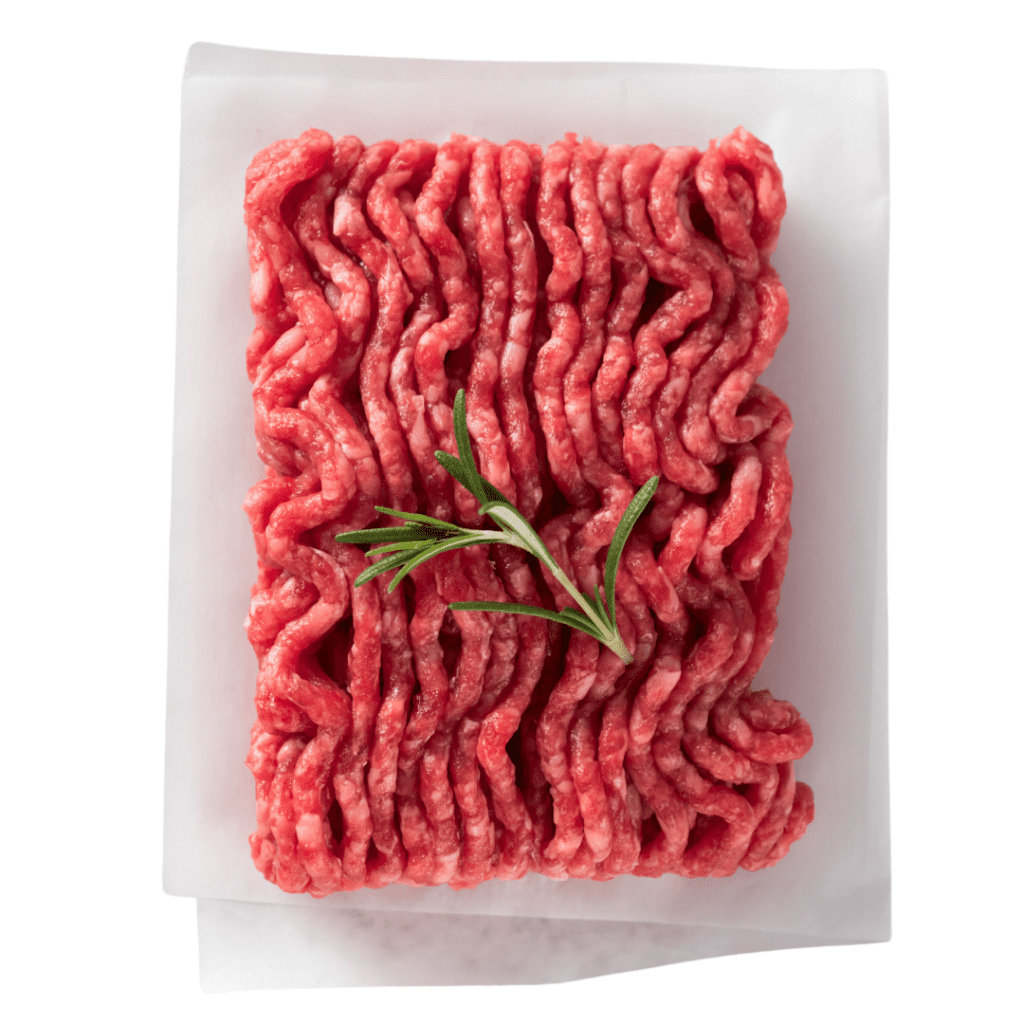
Rich in fat, protein, and iron, which are all essential nutrients for babies, meat, like ground beef, is a great food for babies all the way up to toddlerhood as it’s an easier texture for beginner eaters compared to other types of meat. We recommend choosing regular or medium ground beef for your baby and toddler. Regular ground beef has the highest fat content and it’s also the cheapest option in comparison to the other grades of ground beef. Medium and regular ground beef is actually a lot juicer too, so this makes it even safer for baby to eat.
Learn more about choosing the best cuts of meat for your baby.
If possible, opt for grass-fed, organic ground beef as it offers a superior fat profile, less cholesterol, and more antioxidants compared to conventional ground beef (11).
You can serve ground beef to your baby through all phases of the Texture Timeline™, in the form of a purée, beef pâté, ground beef mixed with sauce, baby meatloaf, a meatball, a hamburger patty, or as loose ground beef. See how to serve ground beef, here.
You can also offer other types of meat including different cuts of beef, lamb, pork, game meat, and poultry. Any type of unprocessed meat is great and will provide healthy fat for baby! It doesn’t matter if it’s organic, grass-fed, or conventional meat (although grass-fed and organic will have a better fat profile, but not a big deal if you can’t afford it).
Learn more about how to safely serve meat to your baby, here.
How can I add healthy fats to my baby's meals?
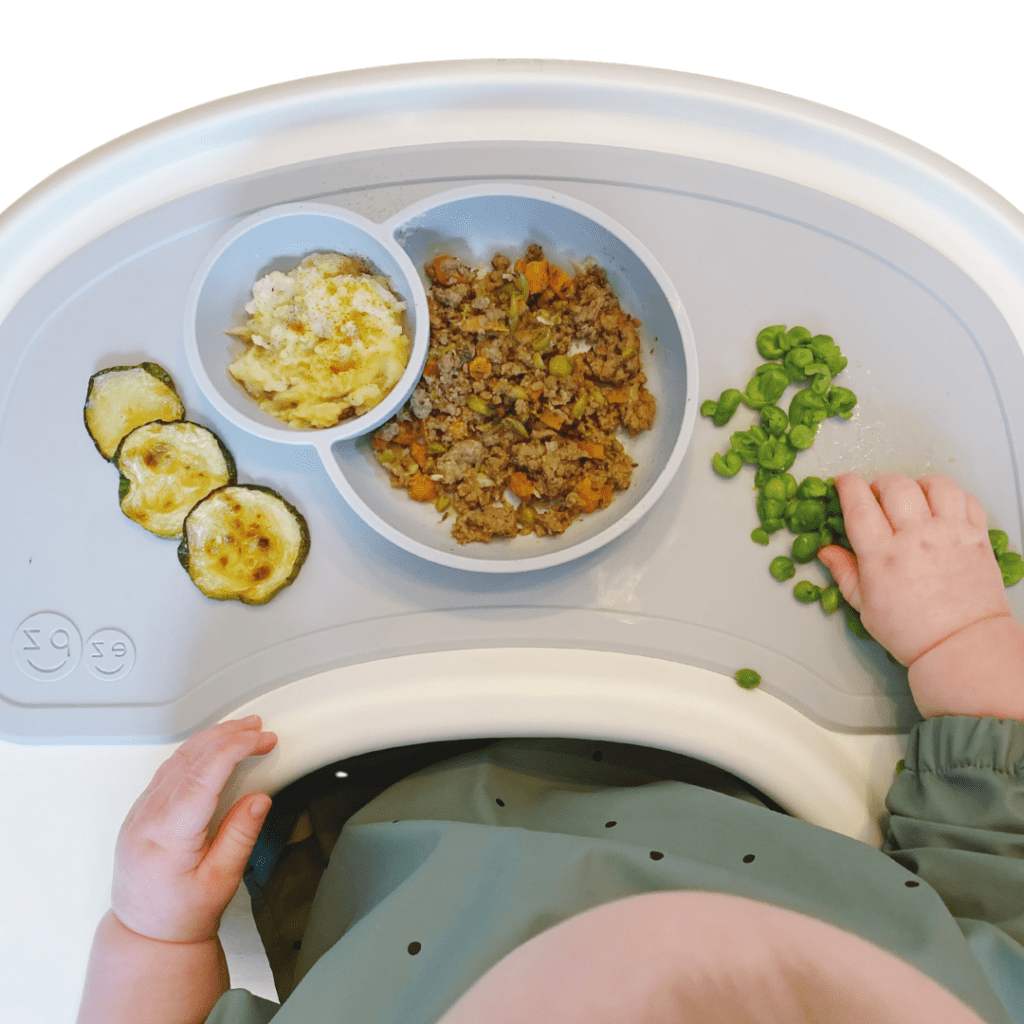
When it comes to adding healthy fats to your baby’s or toddler’s meals, there are SO many options and it doesn’t have to be too complicated! Remember, just because it seems a little odd to us to pair rice with something like yogurt, your baby doesn’t know that it’s odd at all! Here are some of my favorite ways to bump up fat content in your little one’s meals:
- You can add butter to almost any food before or after cooking to bump up the fat content of an otherwise low-fat food. Eg. Sliced apples cooked in a pan with butter and cinnamon – delicious and the safest way to eat apples for babies!
- Use full-fat yogurt and/or avocado as a binder for hard-to-eat foods like quinoa, rice, grated fruits and veggies
- Mix nut butters, like almond butter, into oatmeal, applesauce, or yogurt.
- Add chia, flax, hemp seeds, or ground-up nuts and seeds to smoothies
- Use ground-up nuts and seeds as a sprinkle topping or to add grip to slippery foods that are difficult to hold onto
- Drizzle oils on food after cooking like roasted veggies, pasta, and eggs.
- Mash butter into puréed veggies
- Make pasta or curry sauces with coconut cream
- Crack some eggs into oatmeal during the cooking process and mix in well – undetectable taste!
How much healthy fat should I include in my baby's diet?

Now you know that babies and toddlers NEED healthy fat in their diet, I recommend including a healthy fat at every meal and snack, as fat is also beneficial for keeping your little one full longer!
In fact, the formula for a perfectly balanced plate for baby includes a high-calorie food, a high-iron food, and some type of produce (fruit/vegetable). In the category of high-calorie food, this is where you can include a healthy fat option for baby. You can also alternate a starchy food as your high-calorie food, but more often than not, high-fat foods make for the most nutrient-dense option. Now that you’ve read the blog, you know all of the best healthy fat food sources you can offer your baby!
When it comes to toddlers, we know that fat is one of the most important macronutrients to include when building a balanced meal or snack. In fact – it’s in the name of our infamous FFP rule, our easy formula for building balanced meals and snacks. Fat, Fibre, and Protein (aka FFP). The rule is that every meal should include a substantial source of each of these nutrients, as these are exactly what helps balance blood sugars, keeps your child full for longer, and they deliver the best nutrition.
So to answer the question of how much fat to include in your toddler’s diet…include a good fat source at every meal! For snacks, you can aim for 2 of those 3 macronutrients. This means that some snacks can include fiber + fat, others can include a fat + protein, while others still may not include a fat source and just include protein + fiber. That being said, aim for at least 1 snack per day to have a good source of healthy fat.
This is one of the many reasons why we absolutely love nomz organic bites for toddlers, as they check all the boxes for the FFP rule, making them the perfect snack! They contain fat, fiber, and protein all rolled up in one delicious, nutrient-dense bite. The ratio of fat to sugar is great, with each ball containing 7 g of healthy fat, and only 3 g of natural sugar from Medjool dates. Plus, since it’s unprocessed, it contains fiber to balance it out! Each ball also contains 2 g of protein – further helping to balance those blood sugars and keep your toddler satiated for longer.
Think of them like your child’s favorite two-bite chocolate brownies – but refined sugar-free. They’re the perfect high-fat snack you can always have on hand, that takes no prep and can be eaten anywhere your toddler goes. We regularly eat these in our households, our kids are obsessed with them, and so are we!

Almond banana pancake recipe
Packed with healthy fat, protein, and fiber, these delicious, moist, and most importantly baby-friendly, pancakes make the perfect breakfast or snack for your little one! Feel free to swap out nomz organic almond butter with any of their other three delicious nut butters (pistachio, hazelnut, or macadamia) for a different flavor experience for your baby or toddler!
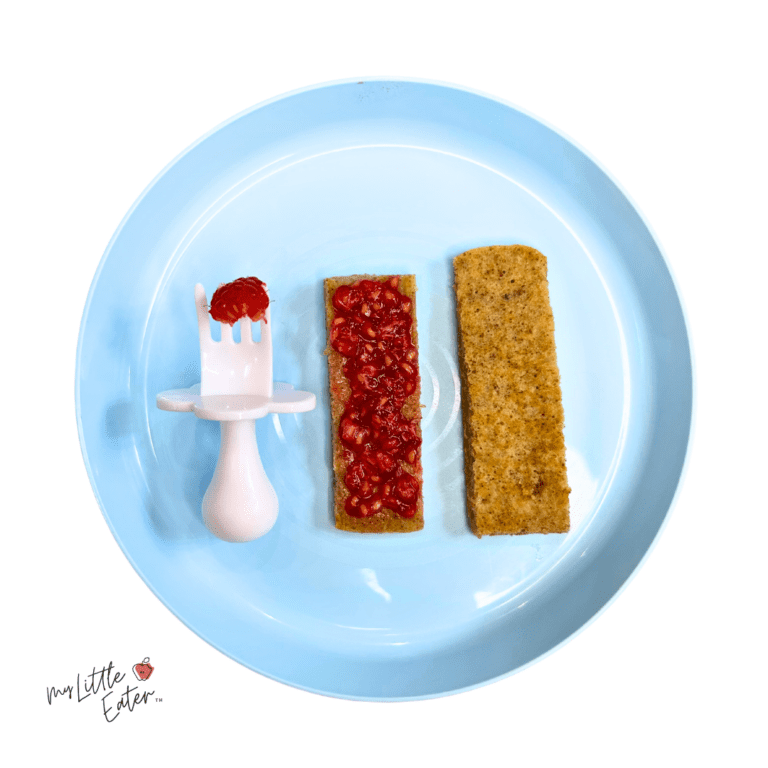
Vanilla Almond Pancakes
Equipment
- mixing bowl
- skillet
Ingredients
- 1 egg
- 1 banana
- 1 tbsp natural almond butter
- cooking spray
- ¼ tsp vanilla extract
- ¼ cup raspberries (fresh, or thawed from frozen)
Instructions
- Preheat a non-stick skillet on low heat. Lightly spray with oil.
- Combine the ingredients in a blender (or mash well with a fork in a mixing bowl).
- Pour 3 tablespoons of batter on the skillet for each pancake. Cook for 3-5 minutes on each side, flip when the top is bubbling. Let cool slightly and cut into long, finger-shaped strips for your baby.
- Mash raspberries using the back of a fork then spread them onto the pancake strips. Flatten a few of the remaining raspberries slightly using a fork, then serve whole for baby to pick up using their pincer grasp, or pre-loaded onto a baby safe fork.
Notes
LOVE IT? PIN IT TO SAVE FOR LATER!

References:
- Infant Nutrition and Feeding: A guide for use in the special supplemental nutrition program for women, infants and children (WIC). 2009. Retrieved from https://wicworks.fns.usda.gov/sites/default/files/media/document/infant-feeding-guide.pdf
- Harvard School of Public Health. The Nutrition Source. Types of Fat. Retrieved from https://www.hsph.harvard.edu/nutritionsource/what-should-you-eat/fats-and-cholesterol/types-of-fat/
- National Institutes of Health. Omega-3 Fatty Acids. Retrieved from https://ods.od.nih.gov/factsheets/Omega3FattyAcids-HealthProfessional/
- Astrup, A., Teicholz, N., Magkos, F., Bier, D. M., Brenna, J. T., King, J. C., … & Krauss, R. M. Dietary saturated fats and health: are the US guidelines evidence-based?. Nutrients, 13(10), 3305, 2021.
- Mozaffarian, D., Pischon, T., Hankinson, S. E., Rifai, N., Joshipura, K., Willett, W. C., & Rimm, E. B.. Dietary intake of trans fatty acids and systemic inflammation in women. The American journal of clinical nutrition, 79(4), 606-612, 2004.
- Risérus, U., Willett, W. C., & Hu, F. B. Dietary fats and prevention of type 2 diabetes. Progress in lipid research, 48(1), 44-51, 2009.
- Nuts for life. Nuts and their fat. Retrieved from https://www.nutsforlife.com.au/resource/nuts-and-their-fats/
- Alothman, M., Hogan, S. A., Hennessy, D., Dillon, P., Kilcawley, K. N., O’Donovan, M., … & O’Callaghan, T. F. (2019). The “grass-fed” milk story: understanding the impact of pasture feeding on the composition and quality of bovine milk. Foods, 8(8), 350, 2019.
- Portnoi, P. A., & MacDonald, A. (2015). The lactose and galactose content of milk fats and suitability for galactosaemia. Molecular Genetics and Metabolism Reports, 5, 42-43, 2015.
- Dairy Farmers of Ontario. Cream. Retrieved from https://new.milk.org/Made-With-Milk/Our-Products/Cream
- The organic center. The benefits of organic meat. Retrieved from https://www.organic-center.org/sites/default/files/publication_files/meatstudy-final_05_14_0.pdf

ABOUT THE AUTHOR
CHELSEY LANDRY, RD
Community Dietitian at My Little Eater Inc., and bunny-mom to Hickory. Chelsey offers one-on-one counselling to parents of babies and toddlers that need more customized support. Learn more by booking a free discovery call with her today!

ABOUT THE AUTHOR
CHELSEY LANDRY, RD
Community Dietitian at My Little Eater Inc., and bunny-mom to Hickory. Chelsey offers one-on-one counselling to parents of babies and toddlers that need more customized support. Learn more by booking a free discovery call with her today!

